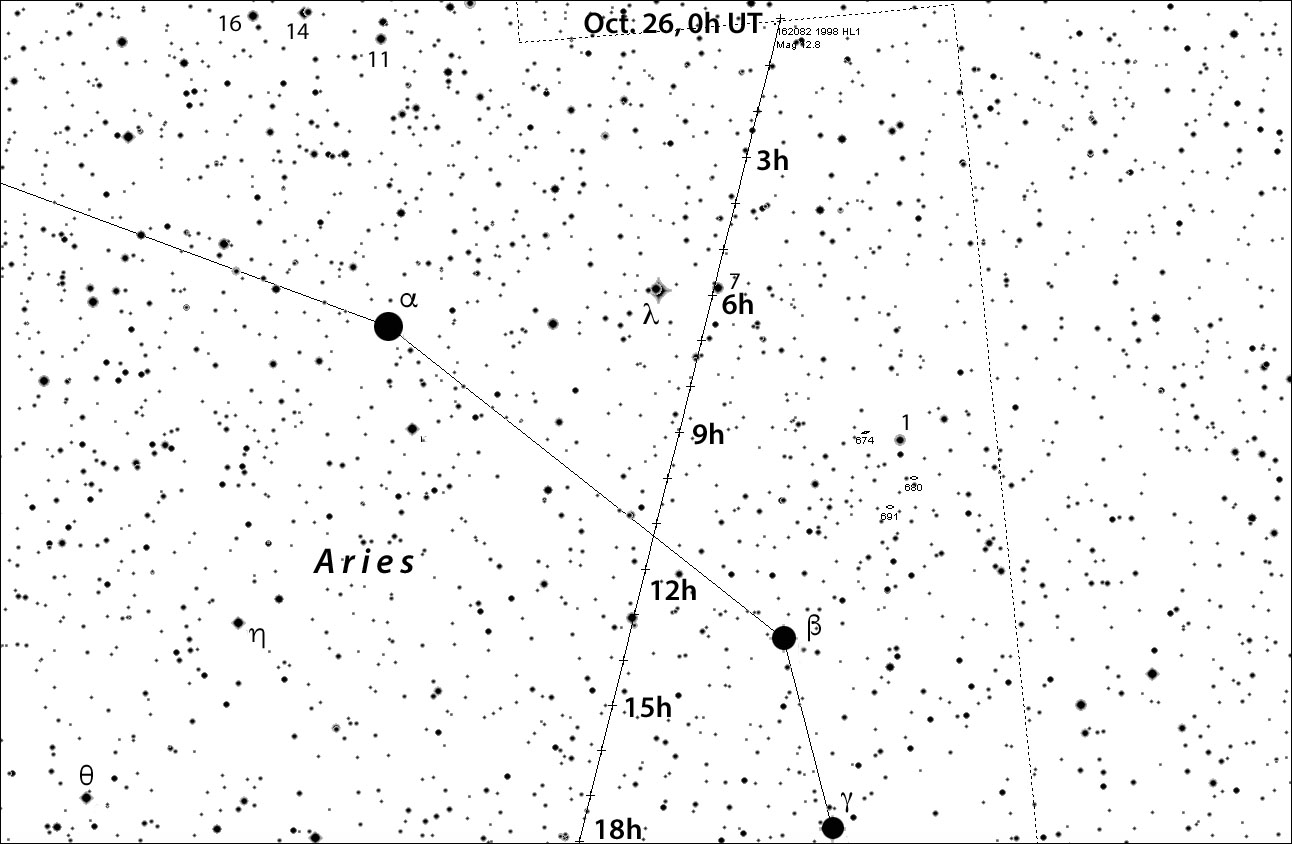“Potentially Hazardous” Asteroid Is Headed For Your Telescope – SkyandTelescope.com
A potentially hazardous asteroid makes a flyby of Earth this Friday, offering amateurs with modest telescopes a chance to ride along.
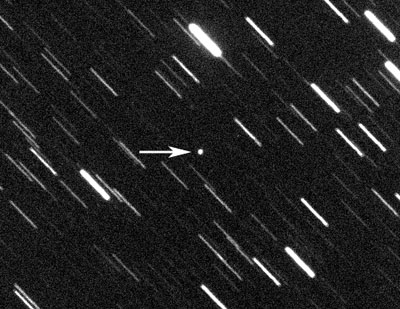
The sharp point of light is asteroid 162082 (1998 HL1) photographed on October 19th when it was 8.5 million kilometers from Earth.
Gianluca Masi
162082 (1998 HL1), a potentially hazardous asteroid (PHA) nearly twice as wide as the Empire State Building is tall, will swing just 16.2 lunar distances from Earth around 17:00 UT on Friday, October 25th. While a “potentially hazardous” designation means that the asteroid’s orbit can cross Earth’s, there’s no need to bite your fingernails this time around, as the object will miss Earth by a good 6.2 million kilometers (4 million miles).
Discovered by the Lincoln Near-Earth Asteroid Research (LINEAR) project at Socorro, New Mexico, on April 18, 1998, 1998 HL1 is an Apollo-type asteroid estimated to be between 440 and 990 meters across. This particular flyby is one of its best and brightest — the asteroid won’t get any closer until a similar rendezvous in October 2140.
Unlike smaller, closer-approaching PHAs, 162082’s appearance will not be a one-and-done with a rapid brightening followed by a precipitous fading. The object manages a respectable 13.1 magnitude on the evening of Thursday, October 24th, and will brighten to 12.3-12.5 by Saturday the 26th before fading back to 13.1 on October 28th. Ardent asteroid chasers can stick with 1998 HL1 through Halloween if they so desire, when it dims to magnitude 14.0.
In a hurry! Potentially hazardous asteroid 162082 (1998 HL1) on October 19, 2019
As the speedy traveler arcs southward from Triangulum to Cetus under a moonless sky in the coming nights, you’ll need at least a 6-inch (150-mm) telescope and dark skies to track it. If your skies aren’t so dark, an 8-inch (200-mm) should do the trick. Along the way, 1998 HL1 passes near several familiar sky-marks including including the Pinwheel Galaxy (M33), Alpha (α) Trianguli, and well-known long-period variable, Mira, which now gleams at magnitude 2.7.
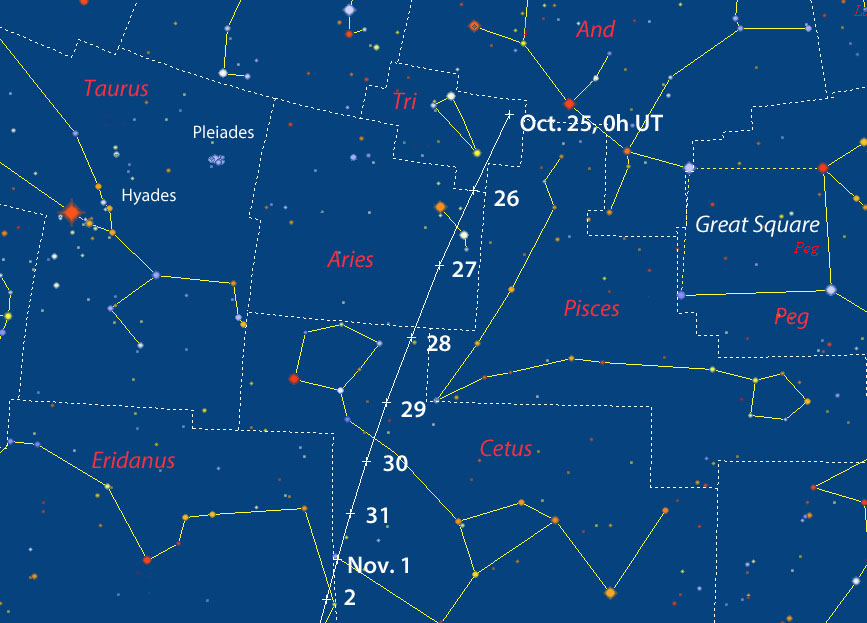
Asteroid 162082 travels south from Aries in Eridanus now through month’s end. It will shine brightest Oct. 24-28.
Chris Marriott’s SkyMap
Don’t have a telescope? Italian astronomer Gianluca Masi will livestream the asteroid’s appearance on his Virtual Telescope Project website starting October 25th at 17:00 UT (1 p.m. EDT). On that night, 1998 HL1 will track fastest across the sky, skipping along at some 20 arcminutes per hour, or 20 arcseconds per minute. That’s speedy enough that you’ll see movement in a matter of seconds when the object passes near a field star. If you’re watching in your own telescope, you can use higher magnifications to “increase” its velocity.
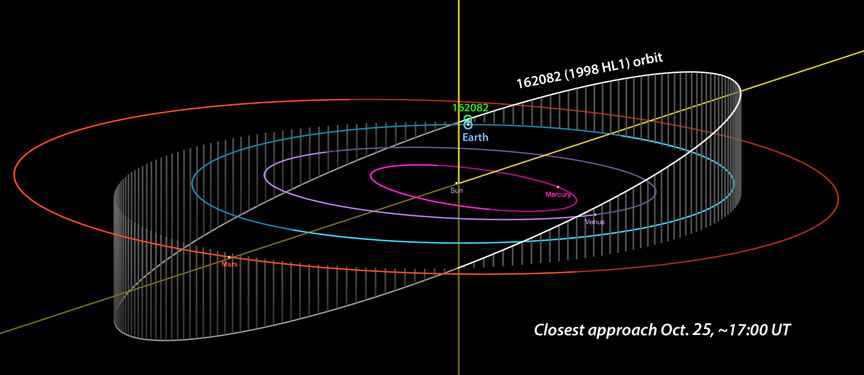
The view from space on October 25th, when the potentially hazardous asteroid (PHA) 1998 HL1 passes closest to Earth. The asteroid’s period is 508 days, and its orbit is inclined 20° to the ecliptic. As of October 2019, there are 2,018 known PHAs.
JPL / Horizons
I’ve included several charts to help you find and track the asteroid. Parallax, the apparent shift in the position of a nearby object against the sky background depending on an observer’s location, will alter the asteroid’s position by up to several arcminutes as it’s viewed from one extreme of the globe to the other. But because the charts (below) are for mid-northern latitudes, the shift will be small.
To find 1998 HL1, locate a bright telescopic star or star configuration that the asteroid will pass close to. Then watch and wait for the asteroid to enter the field of view. Again, because of parallax, the asteroid may lie a short distance east or west of the path or arrive slightly earlier or later than the times shown.
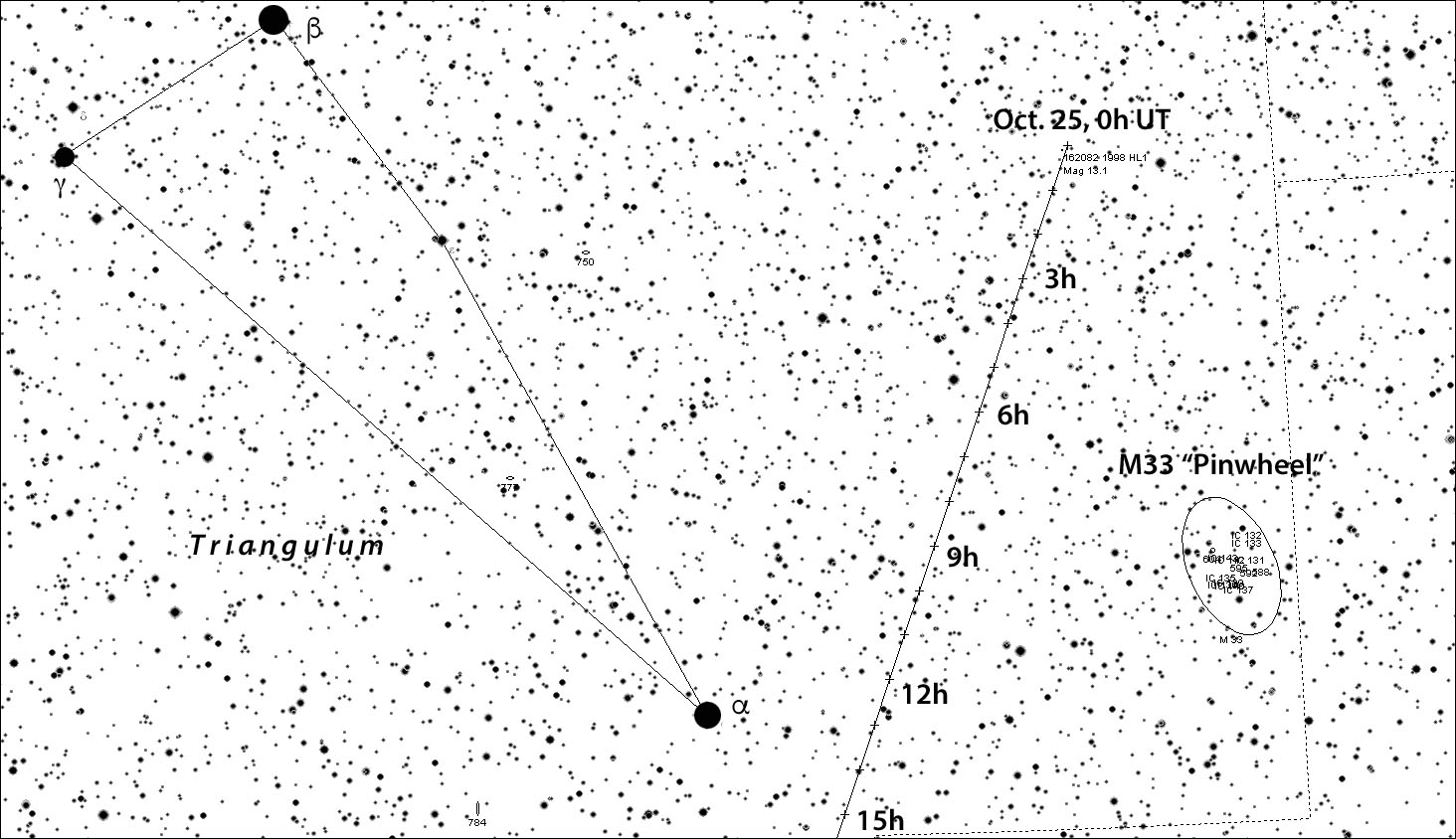
This map plots the asteroid’s path starting at 0h UT on October 25th. Tick marks show its position each hour. Stars are plotted in this and all the charts to magnitude 13. North is up. 0h UT on Oct. 25 = 8 p.m. EDT, Oct. 24; 7 p.m. CDT, Oct. 24; 6 p.m. MDT and 5 p.m. PDT. Click for a large version to save and use at your telescope.
Chris Marriott’s SkyMap, with additions by the author
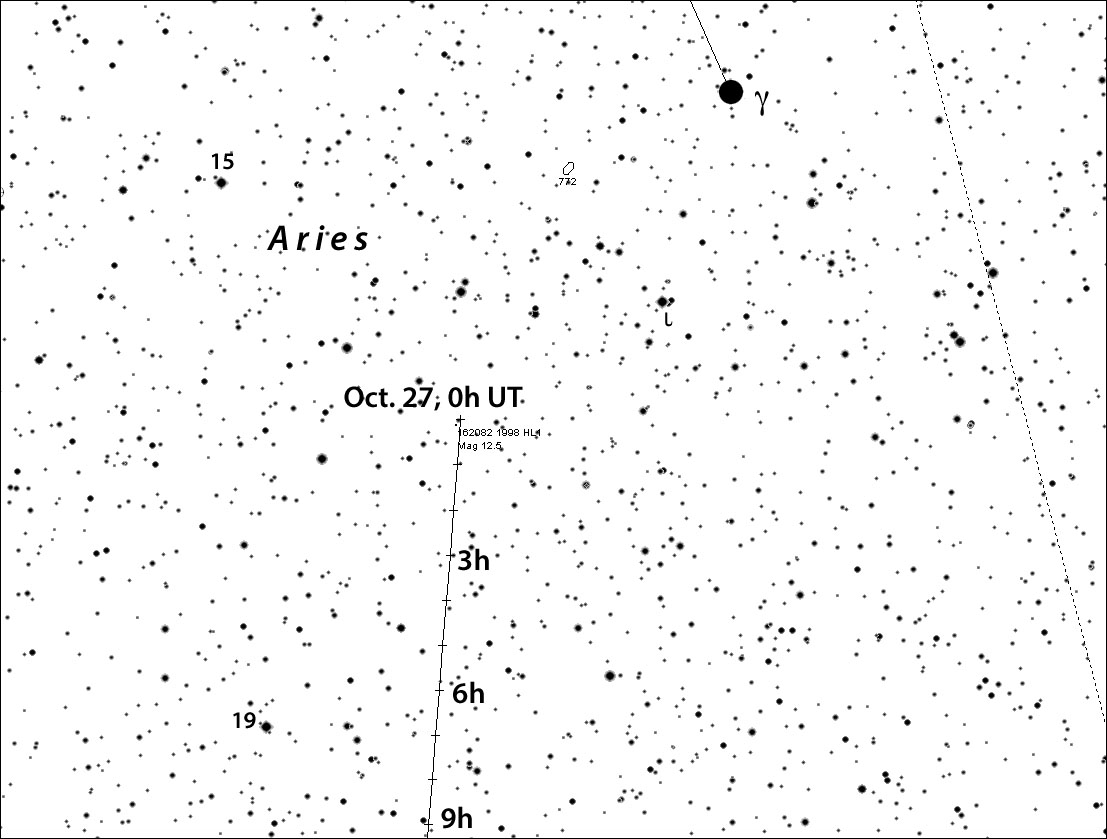
The view on Saturday night, when 1998 HL1 will shine brightest around magnitude 12.3.
Chris Marriott’s SkyMap
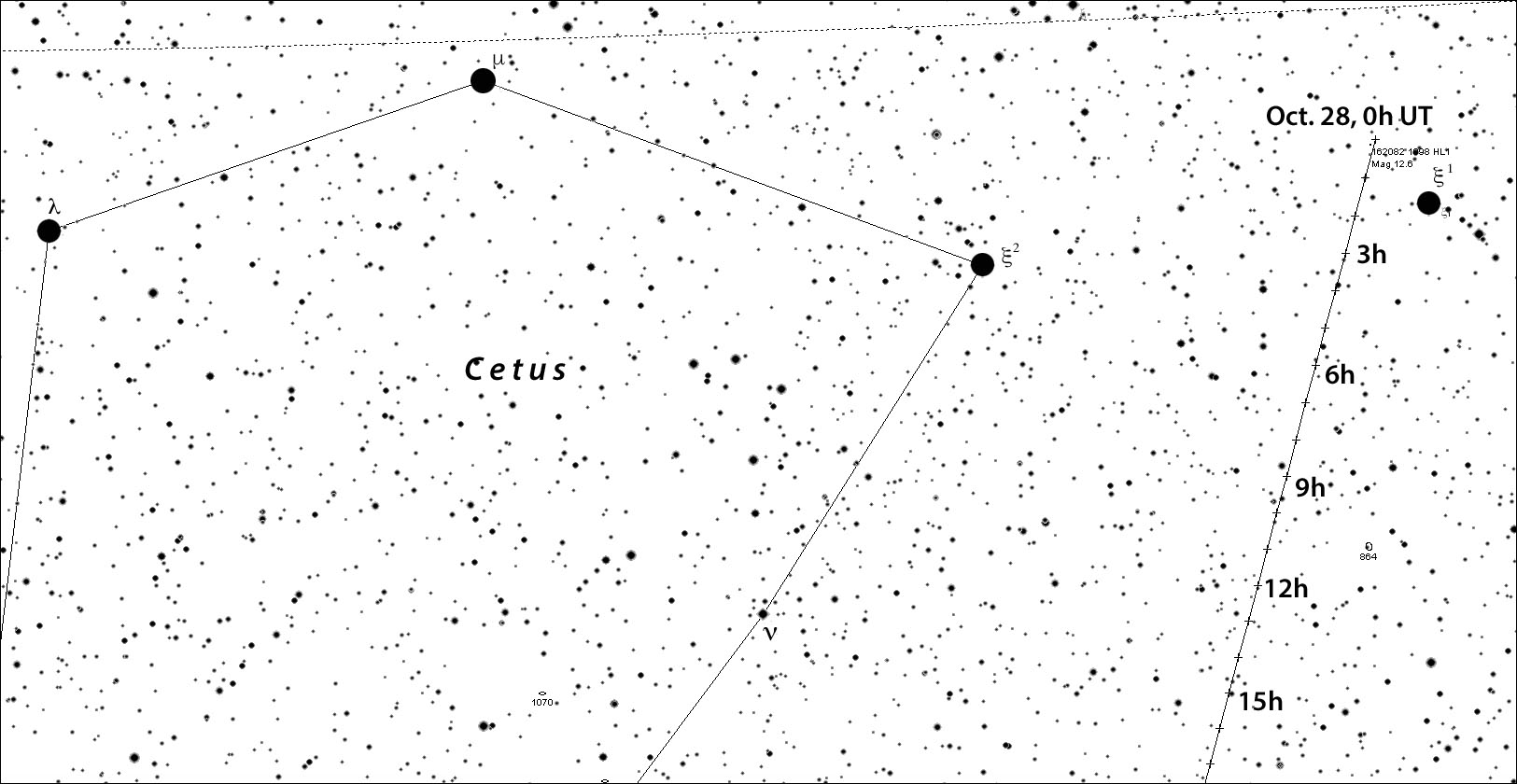
Still relatively bright at magnitude 12.6 to 12.7, the asteroid makes a dash past the head of Cetus the Sea Monster on the night of October 27th.
Chris Marriott’s SkyMap
While the charts should work just fine for most observers, you can always prepare your own. Here are two easy ways:
1. If you already have a program like Starry Night, Megastar, etc. that can plot an asteroid path, just go to the Minor Planet and Comet Ephemeris Service, type 1998 HL1 or 162082 in the open box, then enter your latitude and longitude below that. Scroll to the end of the page, select your software, and click on the Generate ephemerides/HTML button. Save the file that pops up on your screen into your program, open the program, select the asteroid, and create a custom map with time intervals and a magnitude range to your liking.
2. Download the free home planetarium software Stellarium for Windows or Mac. Once you’ve chosen your city, click on the configuration icon (lower left side of screen), select Plugins, scroll, and select Solar System Editor. Click Configure and select the Solar System tab. Select Import orbital elements in MPC format, then Asteroids. Under Select bookmark, choose the PHA option and click Get orbital elements. Scroll through the list and find 1998 HL1, then click Add to list (or Add objects, depending on your version of Stellarium). Close the dialog boxes, choose a time you want to view the asteroid, and click Search window (magnifying glass in lower-left corner of screen). Type in the name 1998 HL1 and the program will take you straight to it. I know — it sounds like a lot of steps, but it’s painless. And accurate.

